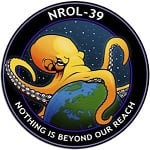So of course both of these are slight simplifications, but what is the connection between the two? If the earth is basically a circle, is an ellipse just a parabola stretched around a circle? Is a parabola just an approximation of a tiny part of an ellipse? How high do you have to be before you change your calculations of a trajectory?
The Math ain’t mathing.
When you throw something on earth and calculate it as a parabola, that’s based on the approximation that the force of gravity is constant across the trajectory. It’s actually a tiny bit weaker 20 feet up than at ground level, but the difference is so small that you can ignore it. The trajectory in a constant gravational field is parabolic.
When something is high enough that you’re doing orbital calculations, you have to take the inverse square law into account. The elliptical orbit is a consequence of the gravitational force being inversely proportional to the square of the distance. It doesn’t apply if the force is constant.
You can also say, look at a small segment of the pointy part of a very skinny ellipse, and it will look approximately like a parabola.
Great explanation!
Elliptical orbit is what you get when all gravity vectors point to a single source such as Earth’s center of mass. If you instead make the “flat Earth” assumption that all gravity vectors are parallel, then you get a parabola. Since most of us aren’t throwing things very far on a planetary scale, the parabolic approximation is frequently considered “good enough”.
Geometry!
https://en.m.wikipedia.org/wiki/Conic_section
They are similar and related but not quite the same thing. It does come down to whether it is orbiting or returning to a ‘flat’ plane, and while an eclipse isn’t quite the same thing as two parabolas put together, that isn’t too far off.
You can think of a parabola as a segment of an ellipse, yes.
But remember: A stable orbit forms an ellipse. An unstable one doesn’t. And throwing an object from the surface of a planet is, sans incredible math or even more incredible luck, going to be unstable.
I don’t think that’s true. Any of it, really.
A parabola has a constant second derivative, while a (half) ellipse has one that diverges to infinity in finite time (since it goes vertical). I can’t really prove that no ellipse section is parabolic, off the top of my head, but that’s strongly suggestive of it.
Every two-body Newtonian orbit in a vacuum is stable, or an escape trajectory. It was either Newton himself or a contemporary that established that.
First paragraph: I see what you’re saying and I think you’re right.
Second paragraph: Even if you’re right on this, and offhand I’m really not convinced you are because it seems like that neglects the possibility of collision, launching anything from the surface of a planet is a three-or-more body problem, featuring 1) the planet, 2) the star it’s orbiting, 3) the launch body, and optionally a number of moons. But that’s, ah, getting away from OP’s question.
Well, exactly, in the context of OP’s question we’re doing “spherical cows in a vacuum”. In reality, no orbit is truly elliptical, either. Then again, if you use a practical measure for a practical situation, they’re close enough to elliptical for most space travel purposes, and definitely stable far away from an atmosphere.
General relativity can also cause noticeable departures even in our solar system, like the precession of Mercury’s orbit. In extreme situations it can get really different - gravitational waves remove energy, and around a black hole there’s a region where escape is possible but not any orbit.
If something is moving in an elliptical orbit, and you are observing it from a fixed point in space, it will appear elliptical.
If something is moving in an elliptical orbit, and you are observing it from a body that is itself also moving in an elliptical orbit, it will appear parabolic.
It’s a parabola because the rest of the ellipse is in the ground.
They move in ellipses on earth as well, but it’s cut short by hitting the ground. Also, air resistance affects the trajectory so that anything thrown/shot will eventually return.
Source: Thousands of hours in KSP
KSP is such a great game. Such a shame what happened to KSP2 but that was doomed from the start.
Yeah, KSP2 was botched on so many levels, primarily by Take2.
Looking forward to seeing what comes out of KSA, though. With many of the old devs and modders of KSP1 on board it looks like they have a good start.
I just hope the used a 64-bit engine this time
They’re very much 64bit, as they’re avoiding unity all together. The standard framework of actors and scenes don’t really work for a game at that scale, so they decided to roll their own, and they’re calling it the Brutal Framework “because it’s quite brutal to work with”.
So far the result is really impressive looking, and since there aren’t many layers of abstraction to work via, the performance is pretty impressive too.
In case you did not already know, I post any updates and shareworthy content here: !kittenspaceagency@sh.itjust.works
Ohh, thanks!
What are you talking about? KSP 1 has been 64 bits since forever, or was that only on Linux?
The engine internals were 32 bit, limiting the size of the solar system due to 32 bit floating point rounding errors when you get too far from the center
Aren’t ellipses basically two joined halves of parabolas?
You might like to try Kerbal. You can see a parabola become an ellipse as your velocity and altitude reach a point where you miss hitting the planet on the way back “down.”
I think that mental model only works if you imagine the parabolas as reaching to infinity in a finite space so that both ends are parallel, ie having identical vertical slopes of +/- infinity. At that point, easier just to call it “half an ellipse”. To me, it’s much easier to imagine a parabola as the end of an infinitely long ellipse.
Your intuition and the KSP example are correct though. If you imagine the plane and cone for a parabola, you wouldn’t notice any significant change to the shape (at a finite distance) if you tipped the plane ever so slightly into forming an ellipse (or a hyperbola, for that matter) since it’s all smooth changes.
Anyway, the size of the elliptical (I think hyperbolic would have a different sort of energy state) arc that’d be formed by a thrown object would be so large relative to human scale as to basically be infinite, equivalent to a parabola. I imagine the difference might become significant once you are launching something a decent way around the Earth, but with that much energy in play I don’t think it makes much difference where exactly the projectile “lands”.
Wouldn’t things only be as infinite as your zoom level? Zoom out to solar system, zoom out to galaxy, etc?
Lots of answers touched the correct answer, which is that in reality things don’t follow parabolas on earth, a parabola is just close enough to the actual thing the object is doing to be indistinguishable. In reality everything follows elliptical orbits, but the top of an ellipsis with a Major axis of 6378 km and a few meters in the minor axis looks the same as a parabola, especially when you don’t see the full orbit because the object hits the ground. If you were to throw a rock and suddenly the entire earth besides that rock collapsed to a single point, your rock will orbit earth in an elliptical orbit.
Are you familiar with the difference between polar (r, theta) coordinates and cartesian (x,y) coordinates? Parabolas are the solution to gravity that is uniform no matter where you sample. It assumes that gravity points in the same direction with the same magnitude no matter where you are. In this model, gravitational acceleration is always 9.81 m/s^2 in the -y direction. That is a reasonable simplification for things that are at the human scale constrained to near the earth’s surface. Deviations from air resistance will matter far more than errors stemming from that assumption anyway.
Conic sections are the solutions to gravity that is between two objects where the force is along the line between the center of mass of both objects and the strength is inversely proportional to the square of separation. Now you need polar cpordinates and the direction of gravity changes as things move around. This works pretty well for orbits around the earth and orbits around the sun, because the earth is so much more massive than sattelites that orbit it, and the sun is so much more massive than things that orbit it. If you need really precise orbit trajectories, ellipses aren’t truly accurate either. You need to account for all the orbiting bodies in the system. The 3-body problem famously doesn’t have purely analytical solutions, and you need to resort to numerical methods to calculate trajectories.
So both solutions come from simplified mathematical models. Despite being simplifications, their predictive power is actually very goood. However, like you are intuiting, it’s important to know when those simplifying assumptions lead to errors that start to become important. It’s hard to come up with a particular threshold for when you need to switch from one model to another, because it really depends on how much accuracy your application needs.
Basically, it’s an ellipse on Earth too. Just one that’s nearly a parabola. Because of approximately constant gravity and an approximately (approximately!) flat Earth, like the current top commenter said.
Only stable orbits are elliptical. Many objects follow parabolic and hyperbolic trajectories in space. Eventually, many intersect with other objects. As time passes, objects that are not in stable (or semi-stable) orbits become less common through attrition.





